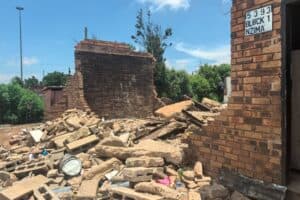The experience in Golden Gate National Park shifted the perspectives of the students from Soweto.
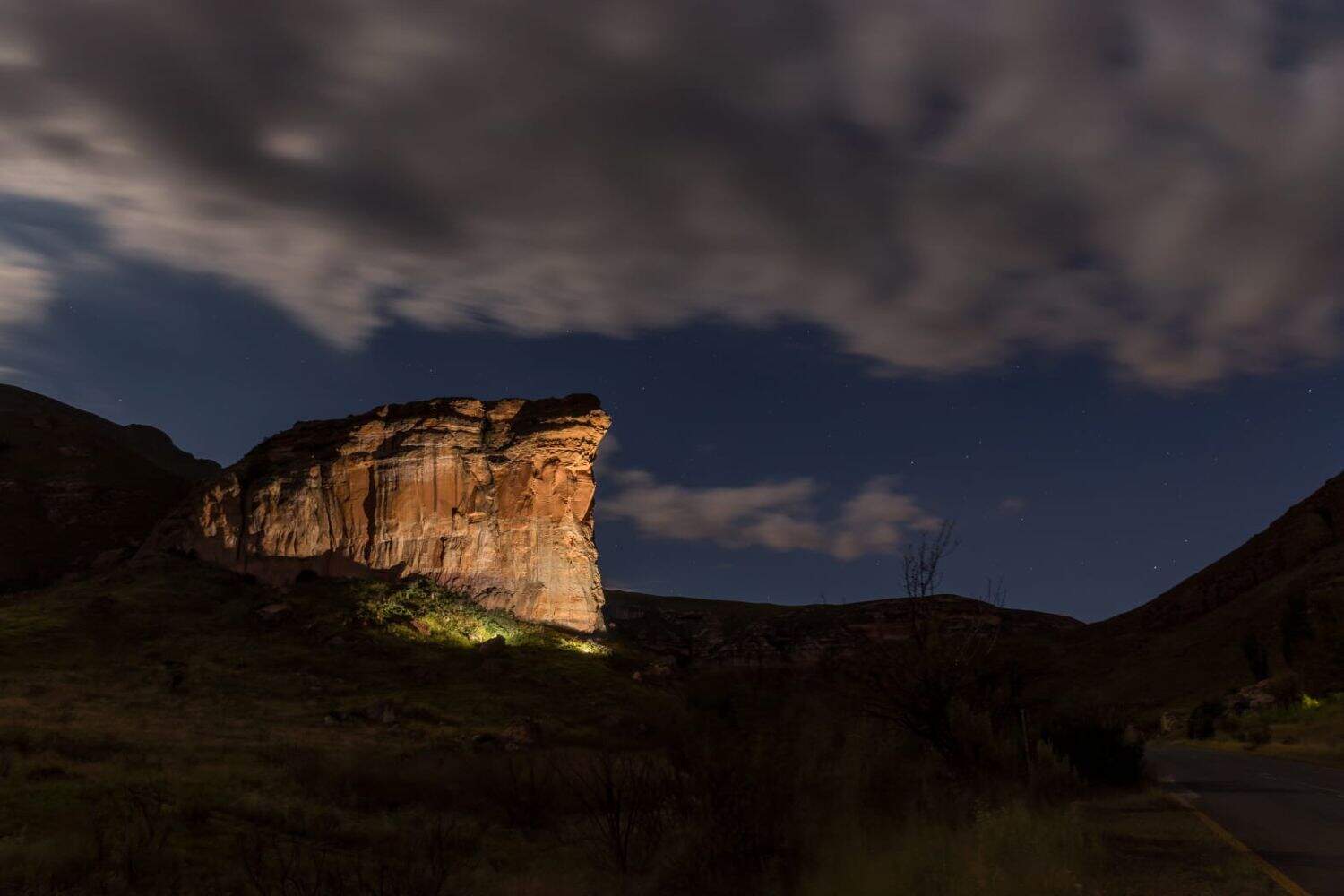
Nine pupils from Phefeni Senior Secondary School in Soweto swapped their urban landscape for sandstone cliffs when South African National Parks (SANParks) hosted them at Golden Gate Highlands National Park.
The three-day adventure opened young minds to possibilities they had never imagined before.
“Township schools are often overlooked and therefore SANParks wants to enable all learners the opportunities to learn about conservation, tourism and socio-economic transformation, the three pillars of SANParks,” according to SANParks’ Gabby Venter.
The group of four boys and five girls from Vilakazi, Soweto, was joined by local students from Moriting waThuto High School on Tuesday, creating a bubble of excited chatter that echoed across the foothills of the Maluti Mountains.
Where dinosaurs once roamed
The pupils’ journey began at the Kgodumodumo Dinosaur Interpretation Centre, a treasure trove of information that recently opened in June. Entrance to the centre is free to the public until 30 September.
Here, wide eyes met fossilised dinosaur eggs discovered in the Free State and across South Africa, some even from neighbouring countries.
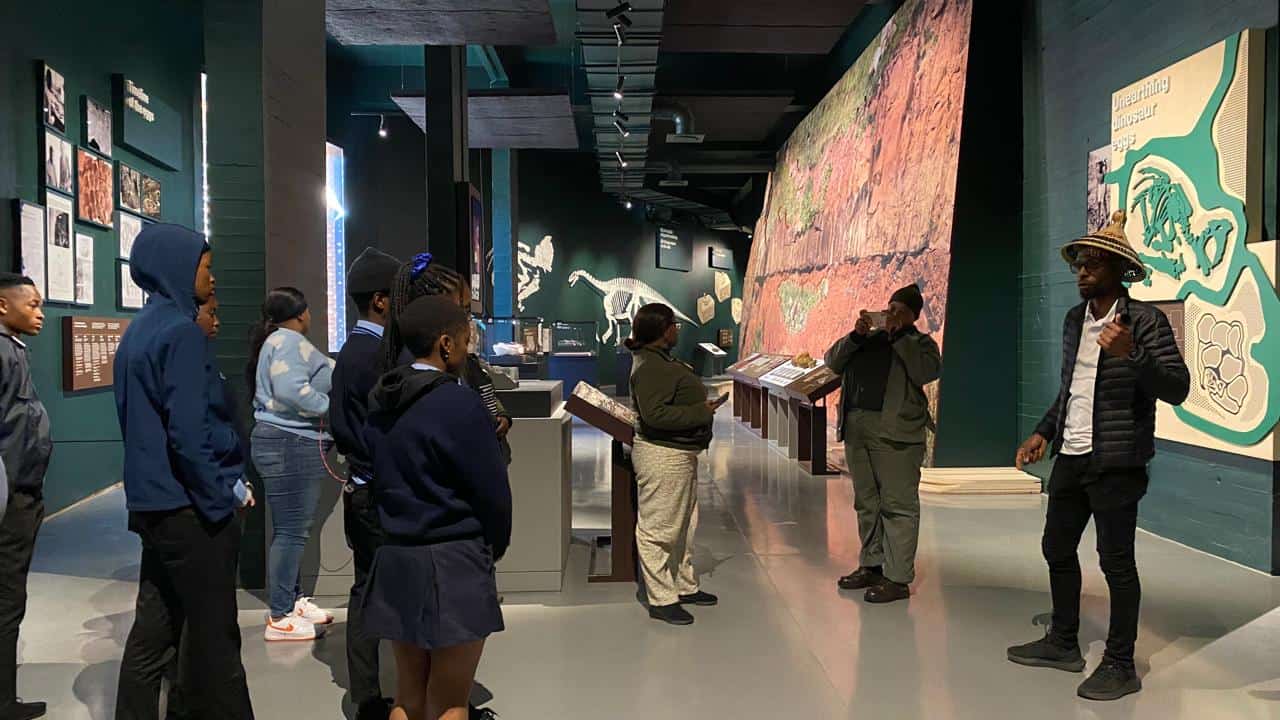
The ancient remnants told stories spanning 200 million years.
A short film depicting Basotho folklore brought ancient history to life through the story of Kgodumodumo.
In Basotho folklore, Kgodumodumo was a terrifying creature that devoured entire communities.
“Kgodumodumo ate all the people in the village. Can you imagine that? Nowadays, Kgodumodumo could mean our worst enemy or even what we fear the most. Something that we should conquer,” an elderly Sotho woman narrates to her grandchild in the film.
But at Golden Gate Highlands National Park, this ancient legend takes on new meaning through an extraordinary paleontological discovery.
When road construction exposed rock layers here, scientists made a groundbreaking find.
The woman described the moment: “Strange shapes in the rock turned out to be the oldest dinosaur eggs ever found.”
These 200-million-year-old fossils revealed baby Massospondylus dinosaurs, showing how mothers returned to nest in this very location for thousands of years.
ALSO READ: Enter the world of dinosaurs
However, climate change eventually made survival impossible as conditions became hotter and drier, leading to the species’ local extinction.
The ancient story now serves as a conservation lesson for modern times.
The exhibition unfolded like a time machine: the geology of Southern Africa, the unearthing of dinosaur eggs, with the first fossil discovered around 1951, and the delicate work of piecing together dinosaur fossils.
The 40-minute tour concluded with Basotho mythology that bridges ancient creatures with modern conservation heroes, leaving students with a sense that they too could become ‘Moshanyana Senkatana’ – the brave hero who saves the village.
Learning that comes alive
SANParks environmental educator Maduvhahafani Matodzi, whose passion for geography led her to this dream job, guided the students with infectious enthusiasm.
Her approach transforms learning from lecture to adventure.
She said the teaching approach differs significantly from traditional classroom methods.
“It works best when we teach in a fun way, different from what they do at school. Because at school, they will go there and sit down and wait for the teachers to come and teach [theoretically]. So here we teach, then show, then they experience,” Matodzi explained.
However, relating conservation to urban students presents challenges.
Matodzi said some students who visit think of the park and nature as living in bushes.
“They don’t understand why the road is not tarred,” Matodzi noted.
“So that is why we educate them, by saying the reason why we don’t have tarred roads and the reason why we have more trees and grasses is because we’re trying to fight global warming.”
ALSO READ: World Ranger Day: Guarding the wild comes at a deadly cost — life behind the badge
Moments of wonder and discovery
The students’ faces lit up as they shared discoveries that shattered their preconceptions.
One pupil, A Ncube, marvelled at discovering “there are different types of vultures”. She said she only knew “the one with the long neck”, referring to the white-headed vulture.
Another student, using the pseudonym “Madumane”, laughed as he recalled his previous assumptions about park life.
“I thought there was a war between the conservationists and the poachers. I thought it was an ongoing thing where the rangers even have to change shifts on a regular basis just to chase poachers,” Madumane explained.
Meanwhile, Ncube had different preconceptions: “I thought they only cared for animals’ welfare, always just looking after them. I didn’t think they did anything else.”
The simple joy of new experiences resonated throughout their conversations.
“I never knew what hiking was. I never experienced that. And the food here was so delicious. I’ve never tasted such food,” one student beamed.
Dreams taking flight
The career exposition also revealed possibilities within SANParks that students had never imagined.
Matodzi painted pictures of diverse departments: tourism management, where hospitality meets nature, conservation work that protects tomorrow’s world, technical services that keep the magic running, human resources that nurture dreams, and communications that share stories of wonder.
Madumane expressed interest in communications after learning about the breadth of the field.
“There is something that was said that resonated with me. Sir [referring to one of the SANParks employees who works in internal communications] said that when taking pictures to write about in the SANParks newsletter, they speak to him, and that’s how he decides what to write. Also, his mentioning that communications is broad made me think that maybe there’s something there for me.”
Z Ntini discovered water quality management as a career possibility.
“I didn’t know that people care for, test and study water quality, levels and safety. I thought that there were big machines that clean and purify water, and I thought they run 24/7 doing just that.”
ALSO READ: How SANParks turned conservation into a success story
Hands-on learning
The experiential learning approach resonated with students.
“I feel like the learning here was more practical than just the learning that we do at school. Sometimes when teachers explain something, you can’t even imagine the concept because you don’t know what they mean. However, here we were able to see and understand what we were taught in class better,” said Ntini.
The hospitality experience created memories that will last a lifetime.
Ntini said she would tell her friends back home that she experienced being treated like royalty.
“People come in and take your plate away from you after you finish eating. They come in and clean after you. Back at home, I’m not used to that. Being here exposed me to a world I wasn’t familiar with. It made me feel like a queen,” she beamed.
A teacher’s hope and challenges
Siyasamkela Diko, who teaches tourism and consumer studies at Phefeni Senior Secondary School, explained the selection criteria for students.
“There’s a criterion that we use mostly. For the programme to be easier for us, we usually take the ones who have passed tourism, commerce, and science. Their exam and test marks must be rated from level 7 and level 6.”
Diko observed positive changes in student engagement. She noted how, at first, they were closed off and holding back because of being exposed to a new scene.
She identified communication barriers as ongoing challenges.
“English, to be exact, some of them they’re just so rooted in their truth. They are so rooted that they just don’t want to try. Even during lessons, when they feel like ‘I want to ask a question, but if I’m asking the question in English, I’m not going to do it’.”
According to Diko, this mentality comes from the tough environments they are raised in.
However, she expressed hope, stating that being exposed to newer and unfamiliar experiences can help steer them in the right direction.
“They just don’t want to change generally. But I think this programme will help broaden their minds and horizons. I think it will change some of the challenges that we are facing because most of the time they’ll be like, ‘No, I’m just learning because my parents said I must come here. At the end of the day, I want to become a criminal,’” she said sadly.
Building bridges to the future
Senior socio-economic transformation officer Thulani Mdlalose explained how programmes vary based on visiting groups.
“It differs depending on the nature of the climb that we receive. Sometimes the pupils come for day visits. We’ll be giving them the introduction to the park, what kind of animal species we have, and why the park was established.”
The programme aligns with SANParks’ Vision 2040 strategy. “Vision 2040 is looking at far more than that to say how do we make sure that people know about nature, live in harmony with nature, not only for us as the current generations, but for future generations,” Mdlalose explained.
The significance of reaching township schools cannot be overstated. Mdlalose said that the youth programme aims to motivate students to tap into the best versions of themselves.
“The significance of this programme is to try and instil in the minds of the students that they can do anything, they can become anything that they want to. We also focus on teaching about conservation, tourism, and showing that they are not closed markets. They can still tap into those and look at diversifying their career options,” Mdlalose said.
ALSO READ: A slice of bush heaven that delivers more than just wildlife
Where vultures dine and students learn
The students visited the vulture restaurant, a conservation success story disguised as an outdoor dining experience for feathered guests.
Here, they watched different vulture species and observed feeding behaviours while learning about the delicate balance between human activity and wildlife survival.
Matodzi explained the conservation importance: “So people down here kill the animal, it could be a cow, could be a horse or any animal, then poison it. So the vultures, when they go there, they eat the poisoned carcass, then they end up dying. That is how they trap them.”
The park provides a safe feeding environment. “So here in Golden Gate, we opened the restaurant for them. So if there’s a dead animal here, they take it and throw it in the restaurant, then they will go and eat them.”
The park’s layered sandstone cliffs became an open-air geology textbook.
Matodzi transformed ancient rock formations into stories students could touch and understand, explaining how “way back then, the land was wetlands” where dinosaurs once thrived, leaving their mark in stone that students could see with their own eyes.
Playground for all ages
Golden Gate Highlands National Park welcomes visitors with accommodation options that suit every budget and style.
The park derives its name from the striking, golden-hued sandstone cliffs that define its landscape, which glow vividly at sunrise and sunset.
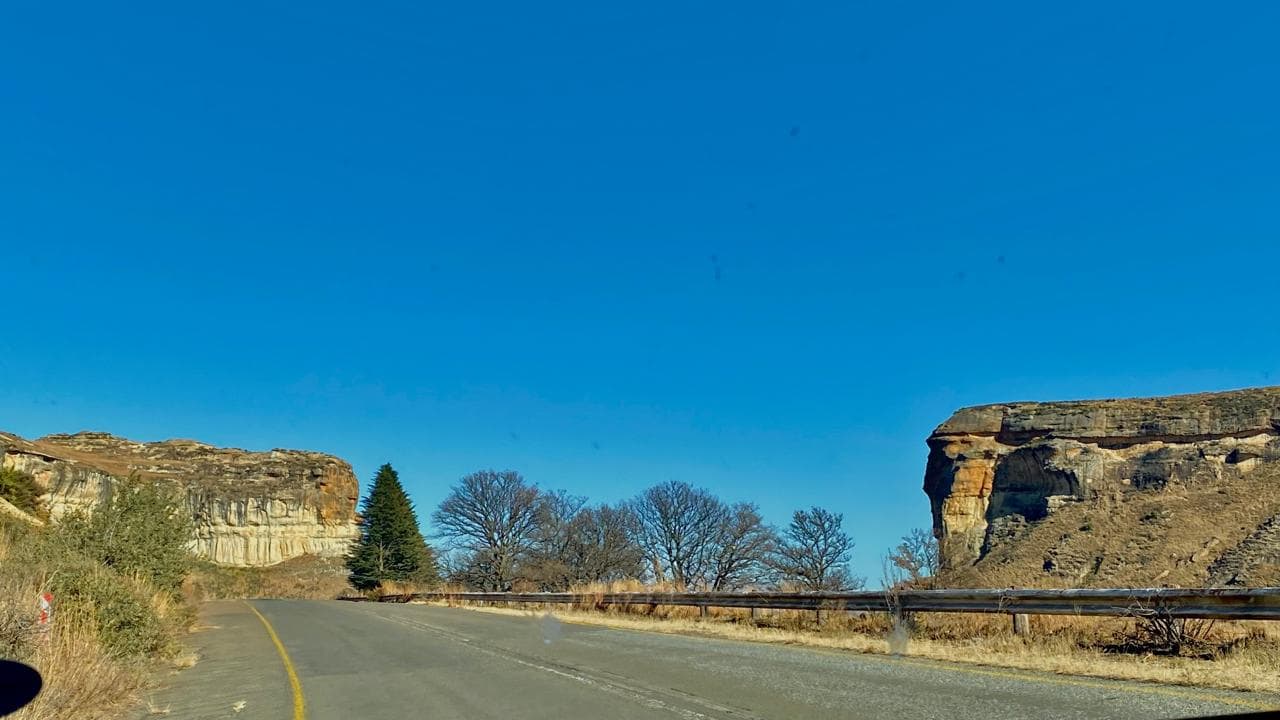
Accommodation ranges from basic campsites at Glen Reenen Rest Camp (R330 to R363 for 1-2 guests) where stories are shared around campfires, to family cottages (R2 177 for 1-4 guests) that feel like mountain homes away from home.
The Highlands Mountain Retreat offers log cottages (R2 067 to R3 331 for 1-4 guests) that blend luxury with nature, while the Basotho Cultural Village Rest Camp provides traditional rondawels (R1 121 for 1-2 guests) that connect visitors to local heritage.
Daily conservation fees apply at R70 for South African adults, R141 for SADC nationals, and R293 for international guests. Wild Card holders are exempt from these fees.
What to do at Golden Gate
Adventure seekers can tackle the 28-kilometre Ribbok Hiking Trail, where patient hikers might spot black wildebeest, blesbok, Burchell’s zebra, eland, red hartebeest and springbok dancing across the grasslands.
The truly fortunate might glimpse rare species like the magnificent bearded vulture, the endangered bald ibis, or the powerful black eagle soaring above the sandstone cliffs.
Bird enthusiasts can pursue any of the park’s 200 identified species.
Families can choose gentler adventures such as the Cathedral Cave Hike, which takes about four hours and leads to hidden chambers in the rock.
There is also the challenging Wodehouse Hike, which takes approximately six hours but rewards serious hikers with spectacular views.
Lastly, the family-friendly Mushroom Rock Hike is only an hour.
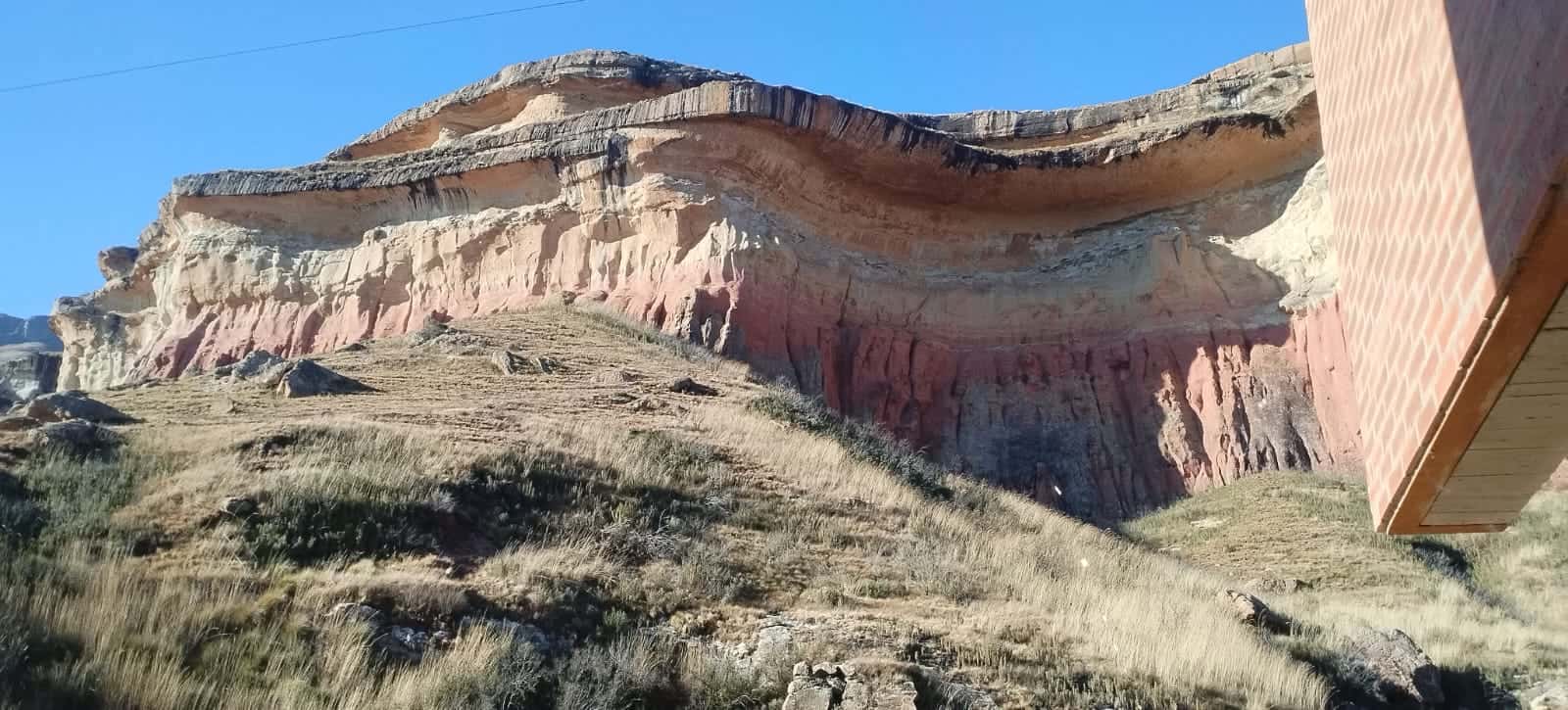
Those seeking thrills can try horse riding at Gladstone Stables, where gentle giants carry riders through mountain paths, canoeing at Gladstone Dam, or abseiling at Wilgenhof Environmental Centre, where courage meets stunning views.
Hearts and minds transformed
The experience shifted the students’ environmental perspectives.
Sitting around a bonfire, reflecting on their experiences at the park, the common theme among the pupils was gratitude for exposure to a world that was far from what they were used to.
Some of them shared how they thought experiences like this were only reserved for white people, and they reflected on the importance of dispelling this misconception.
One learner, N, reflected: “It’s altered how we live back at home. We generally don’t care for animals the way they do here; we kill them. I’ve since learnt that that is wrong and I will be taking this mentality back home with me.”
When asked about dream jobs at Golden Gate, the students’ responses painted pictures of newfound purpose.
One student chose environmental economics, weaving together her love of numbers with nature’s needs.
Another selected ranger work, inspired by the passionate dedication she witnessed.
A third picked receptionist work, drawn to the idea of welcoming others into this magical world with the same warmth she experienced.
Opening doors to wonder
The programme represents broader efforts to democratise access to national parks.
“Some of the kids will start school from grade 1 to grade 12 without having an opportunity to access a national park. So this programme is also important as a mechanism to give access to those who are less fortunate to come visit parks on their own,” Mdlalose noted.
Other national parks operate similar programmes, with plans to expand environmental education centres across the SANParks network.
“Not all of them, but those that have do the same thing that we do. And yes, there are plans to have environmental education centres in most, if not all, the parks,” Mdlalose confirmed.
The Golden Gate experience demonstrates how three days among ancient sandstone cliffs can reshape young lives in ways that extend beyond township boundaries.
Here, beneath the golden light that gave the park its name, students discovered that their dreams could be as vast as the Free State sky, and as enduring as the dinosaur fossils that first sparked their wonder.
READ NEXT: Ford powers leopard conservation efforts






